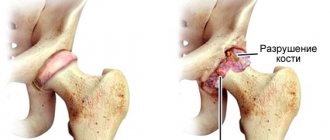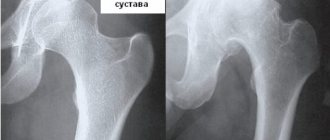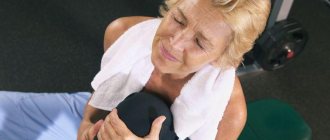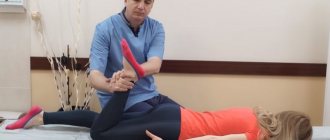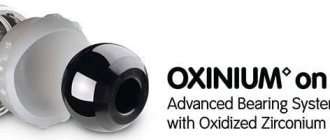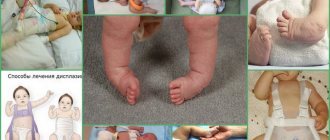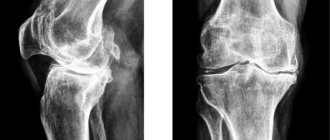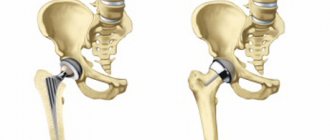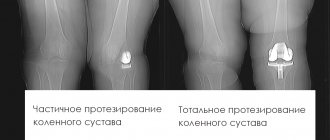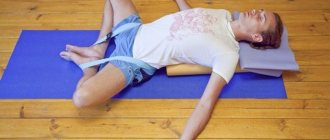In our clinic you can take a course of exercise therapy under the guidance of experienced and highly qualified rehabilitation doctors and rehabilitation specialists.
You can get detailed information and sign up for a consultation by calling: 295-50-65, 504-89-72.
Exercise therapy (physical therapy) is a rehabilitation technique that allows you to quickly get back into shape after surgery and injuries, and is also an effective means of prevention that prevents the occurrence of various diseases. Thanks to an optimally designed course of exercise therapy, a person can significantly improve their quality of life. The variability and number of classes, the degree of load are selected by the doctor in accordance with the individual characteristics of the body and the assigned tasks. Quite often, gymnastics is combined with physiotherapy and other rehabilitation methods - for example, with myostimulation, massage, manual therapy, and the use of exercise machines.
The main objectives of therapeutic exercises are:
The main goal of therapeutic exercises is the most effective and quick return of the patient to an active, full-fledged lifestyle.
- Relieving pain in muscles, bones and ligaments;
- Improved mobility;
- Reduced need for operations;
- Improved blood circulation;
- Optimizing the delivery of nutrients to organs and tissues.
You can read more about some of the physiotherapy methods used in our clinic here...
Features of physical therapy.
Therapeutic exercise is a set of dosed exercises that the patient must perform along with properly practiced breathing. Exercise therapy is not just gymnastics, it is a medical technique that is aimed at eliminating diseases, rehabilitation after operations and a speedy recovery. Quite often the method is used for problems with the spine and musculoskeletal system, the central nervous system, and pathologies of internal organs. When developing a course, the doctor takes into account the patient’s capabilities, type of illness or injury. The exercises can be carried out both in a hospital under the guidance of a specialist, and at home (but only after careful instructions and subject to strict compliance with the instructions).
Thus, there are three main ways to perform classes:
- On an individual basis - required after injuries and complex operations, as well as in cases where the patient has limited ability to move;
- In groups - provided that the patients have the same pathology;
- Independently - when the recovery is coming to an end, and the patient has already become familiar with all the necessary movements, the technique of performing them, and can perform them without the help of a doctor.
Exercises for prevention
Prevention of varicose veins of the lower extremities consists of dosed, complex loads. An excellent method to prevent the development of the disease is swimming.
Here is a list of the most common exercises for the prevention of varicose veins, which are easy to perform at home:
- Sitting. Stretch your legs forward, perform circular movements with your feet clockwise and counterclockwise, repeat 10-15 times. Then place one foot on the toe, the other on the heel, alternate the position 10-15 times.
- Standing. Carefully rise to your toes, gradually lower to your heels, also 10-15 times. Then spread your legs shoulder-width apart and repeat the exercise. You can do 5-10 smooth squats.
- Lying down. A popular exercise is cycling - repeat the movements for 30-40 seconds. Then stretch your legs up, pointing your toes towards the ceiling. Keep your legs straight, slowly open and close them, 10-15 repetitions.
In what cases is exercise therapy prescribed?
There are many indications for prescribing. In particular, this rehabilitation course is prescribed by specialists in the following medical fields:
- Orthopedics – for joint disorders, flat feet and foot pathologies;
- Traumatology – required after fractures, damage to the musculoskeletal system, joints, inflammation and detection of chronic diseases;
- Neurology – can help with hernias, depression, and osteochondrosis;
- Cardiology;
- Pulmonology and other areas of medicine and rehabilitation.
In addition, therapeutic exercises are an excellent assistant for pathological developmental disorders in childhood. Of all these areas, health-improving physical education is most often used in traumatology.
Exercise therapy is prescribed at the following stages of recovery:
Immobilization.
This stage affects the period after injury and/or surgery, when the most active fusion of bone tissue occurs, wounds heal, and so on. This process can last from a month to three, depending on the severity of the damage received. Gymnastics carried out at this stage are aimed at restoring tone to the body, as well as restoring metabolic and nutritional processes, cardiovascular and respiratory functions. Also, thanks to gymnastics, lymph and blood circulation are normalized. Classes are conducted statically, for the most part the emphasis is on breathing exercises and balance (which helps to normalize the vestibular apparatus).
Post-immobilization phase.
The next stage is preparation for independent walking and improved performance. In addition, the goal of the event is to increase endurance and muscle tone. Sometimes doctors include in the list of exercises standard work from labor lessons - grinding, production of basic objects.
Rehabilitation.
The final stage, at which the return to sports form (in case the athlete is injured) occurs, and the opportunity to live the same life appears. Exercise therapy during rehabilitation becomes noticeably more difficult and longer - it includes walking, swimming, and doing physical exercises. The execution is strictly controlled by the doctor - the speed of recovery and the effectiveness of the procedures performed depend on this. After completing the rehabilitation course in the clinic, physical therapy can be performed independently, but only with strict adherence to all the recommendations of the rehabilitation doctor.
Individual goals achieved when prescribing physical therapy:
- Accelerating consolidation;
- Improvement of trophism in the damaged area;
- Hypertrophy of the muscular system;
- Increased joint mobility;
- Formation of necessary compensations and much more.
Gymnastics for treatment
If you have been diagnosed with varicose veins, therapeutic exercises should become an integral part of your life. Here the exercises will be more difficult than in the case of preventive exercises. However, they must be performed if you want to consolidate the results of drug therapy and prevent the development of serious complications.
Physical exercise
- Lie on your back, lift your right leg up, and reach for it with your left hand. Then repeat the exercise with your left leg and right arm. The optimal load is 10-15 repetitions (look at your own feelings, if it’s hard, don’t overload the body).
- Lying on your back, bend your knees and press them to your stomach. In this position, raise your head and body, reaching towards your legs. Hold this pose for a few seconds, then relax and rest for 15-20 seconds.
- While lying down, lift your legs vertically and rotate your feet. Spend 5-7 minutes on this exercise.
- Sit on a chair. Place your arms behind the back of the chair, lift your legs with your knees bent, then straighten them horizontally. Bend your legs again and slowly lower. Do 5-10 approaches.
- Stand on a solid surface and begin to actively march. Bend your knees and try to lift them as high as possible.
- Finally, do one more simple exercise. Lie down, tense your legs and pull your toes as hard as possible so that you feel tension in your calf muscle. You need to do 5-10 approaches of 10 seconds.
No equipment or special devices are needed for classes. It is important that the surface on which you lie down is flat and moderately hard - you can lay a fitness mat or a regular blanket. The main thing is that the exercises do not bring discomfort or pain.
Breathing exercises
They are performed in conjunction with physical ones. You need to breathe deeply, measuredly. You should also alternate between diaphragmatic and chest breathing:
- Breathe deeply for a minute and gradually exhale. So that the chest rises.
- Then change tactics - breathe with your stomach connected. As you inhale, it should increase, and as you exit, it should decrease.
This will improve charging efficiency and saturate the tissues with oxygen.
Walking
Regular walking is the key to healthy feet. There is no need to go to extremes and walk everywhere exclusively. 30-60 minutes of leisurely walking a day will perfectly help cope with the signs of varicose veins.
Complex exercises
It is not at all necessary to perform all of the above exercises. Create the most optimal complex for yourself and spend 20-30 minutes a day on exercises. In addition to preventing varicose veins, exercise will help strengthen the leg muscles and tighten the skin.
How a course of exercises is selected.
A specialist can select exercises based on a variety of factors:
- Possible degree of activity (depending on the phase of recovery);
- Location of damage (different selection options are provided for different parts of the body);
- Direction and goals (based on these factors, both very simple and more difficult movements can be assigned);
- Skills that the client wishes to develop (if classes are used for preventive purposes).
It is worth noting that if one limb is injured, special classes are also selected for the second - this is necessary to strengthen trophism and maintain coordination skills. In addition, exercises on the second arm or leg, performed in the correct mode, will allow you to form effective lymph circulation, blood flow, and activate repair processes. Sometimes physical therapy involves the use of weights and other sports equipment.
Additional recommendations
Even if you regularly perform physical exercises for varicose veins, do not expect an immediate effect. To eliminate the symptoms of the disease, you must also follow the following recommendations:
- Wear compression stockings. It significantly reduces pressure on the walls of blood vessels, relieves swelling and the feeling of fullness. However, you should use medical knitwear only according to a doctor’s indications - amateur efforts in this matter can lead to aggravation of the situation.
- Avoid being near a hot battery or open fire. Elevated temperatures interfere with normal blood circulation.
- Avoid eating excessively salty foods. If you have varicose veins, you should completely avoid table salt - it retains water in the body and interferes with normal fluid circulation.
- Take baths in the morning, not before bed. If possible, it is better to limit yourself to a shower.
- Watch your weight. In obese people, the load on all body systems, primarily the cardiovascular system, is significantly increased.
- Sleep - exclusively lying down. If you decide to take a nap on a sofa or chair, place your legs horizontally. Prolonged stay of the lower extremities in a vertical position significantly increases the load on the vascular bed.
In the treatment of varicose veins, an integrated approach is extremely important. Even surgery, sclerotherapy and other modern techniques will not give lasting results if the doctor’s recommendations are not followed.
Physical therapy, massage, physiotherapy, manipulation
Session with a physical therapy and sports medicine doctor/rehabilitation specialist (movement therapy/physical therapy/physiotherapy/massage/manual techniques). 60 min. 3 800 Session with a physical therapy and sports medicine doctor/rehabilitation specialist (movement therapy/physical therapy/physiotherapy/massage/manual techniques). 30 min.2 00016 rehabilitation sessions (motor therapy/physical therapy/physiotherapy/massage/manual techniques) - 5% discount57,760Attention! Prices are presented for informational purposes only and are not a public offer!
Exercises strictly contraindicated for varicose veins
There are a number of activities that can negate the entire positive effect of exercises for the treatment of varicose veins:
- Strength exercises with a barbell. To perform them, the body needs a huge amount of energy and resources. When lifting a barbell while standing, there is a possibility of permanently destroying the veins in your legs.
- Squats with weights. They lead to stagnation of blood in the legs and enormous pressure on the vascular bed of the lower extremities.
- Exercise bike. Absolutely not suitable for people with varicose veins.
- Jumping. When landing, bones, joints and soft tissues absorb the jump, and the lion's share of the load goes to the veins and blood vessels.
- Run. Even the most advanced treatment techniques will not help if you run regularly, especially on hard surfaces.
All of the above exercises only worsen varicose veins on the legs. They provoke blood stagnation, lead to a decrease in the elasticity of the veins, and significantly increase the risk of blood clots.
Exercises for varicose veins should only be prescribed by a specialized specialist. This could be a phlebologist with whom you are seeing, or an experienced rehabilitation therapist who cares for patients with problems of the cardiovascular system.
Still have questions about exercises for varicose veins?
Free consultation with AngioClinic specialists
Author
Salmina Daria Vladimirovna
Geneticist. Graduated from the Chelyabinsk State Medical Academy. She completed an internship at the Northwestern State Medical University named after I.I. Mechnikov.
